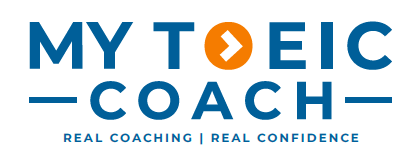🧩 You’re Solving the Wrong Problem Before the Listening Even Starts.
Most beginners treat every TOEIC Listening question as a standalone challenge.
They read the text, try to understand it, and hope they catch the answer in the audio.
But there’s a problem.
They don’t realize that TOEIC Listening isn’t giving them “random” questions.
Every question follows a format — a pattern — a rhythm.
High scorers don’t wait to figure out the problem during the audio.
They know the “type” of problem the moment they read the question.
This pattern recognition is a skill.
And at MTC, we build it through repetition, not theory.
🎧 ALT Strategy (Beginner–Intermediate): Pattern Spotting Preview
Beginners often fall into the Translator Trap or Passive Listening Loop because they can’t see the problem’s “shape” before it begins.
This drill trains them to identify problem types instantly.
✅ What to do:
Pick a Part 3 or Part 4 question set.
Before listening, scan the question stems only (don’t look at choices yet).
For each question, quickly decide:
Is this a Who? (person-focused)
A What? (information-focused)
A Why? (reason-focused)
A When/Where? (detail-trap-focused)
Write a 1-word “problem type tag” beside each question.
Listen with that “tag” in mind — your brain will start searching for the answer in the right places.
✅ Why it works:
Builds predictive listening (you’re not starting from zero when the audio plays)
Helps you ignore irrelevant information faster
Reduces cognitive load during real-time decision-making
🔼 How to level up:
Reduce preview time to 10 seconds for 3 questions
Practice with “trap-heavy” problem types like time and numbers
Start mentally tagging problem types without writing
🔍 ALT Strategy (Advanced): Fake-Out Trap Anticipation Drill
Advanced learners get stuck because they fall for “realistic traps” — answers that sound correct but aren’t.
This drill trains you to anticipate and dismiss them faster.
✅ What to do:
Choose a Part 4 question set.
Before listening, scan the answer choices only.
Predict which choices are likely trap phrases — the ones that will sound obvious but be false.
As you listen, focus on proving why that choice is wrong as soon as you hear it.
Only select an answer after you’ve “eliminated” the fake-outs.
✅ Why it works:
Sharpens reaction to subtle test tricks
Shifts you into an active elimination mindset
Builds the habit of “trap-first” listening, reducing overthinking time
🔼 How to level up:
Set a 3-second limit to eliminate traps after hearing them
Practice with intentionally misleading audio clips
Drill with Part 3 question sets where speakers give extra, confusing info
💬 Final Thought
Most learners walk into TOEIC Listening trying to “solve problems” after the audio starts.
That’s too late.
High scorers are already working with a mental map —
They know the format. They know the pattern. They know what kind of answer they’re looking for.
MTC’s ALT isn’t about teaching you more English.
It’s about giving you the ability to recognize problem types instantly — so when the answer comes, you’re ready.
This isn’t about speed reading or listening harder.
It’s about building automatic recognition through strategic repetition.
Want to Learn More?
Our blog is full of practical strategies that help test-takers like you build better habits, overcome common blocks, and improve TOEIC scores through smarter, easier methods. Try our free TOEIC Block quiz now!
